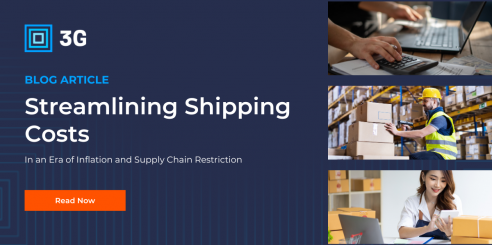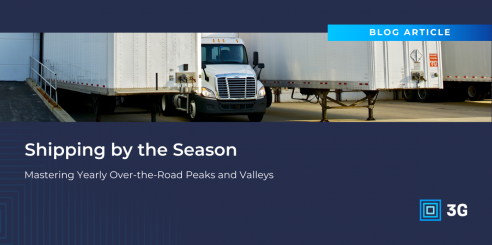In today’s complex logistics landscape, ensuring cost-effective and timely delivery is like playing a game of chess, with a seemingly endless number of variables to consider for every aspect of optimizing your operation. Effectively capturing and utilizing the shipping data hidden throughout your organization is key to unlocking greater operational efficiency, higher capacity utilization, deeper insight, and better decision-making. But without the right analytics tools to both capture and make use of all of this data, it’s impossible to realize your company’s full potential.
If you aren’t using the latest analytics technology you’re ignoring a wealth of opportunities available to compete more effectively in the industry. That’s where a transportation software suite comes in.
Utilizing Shipping Data with Transportation Analytics
Too many shippers still rely on manual processes that involve paper-based workflows, manual data entry, and fragmented systems. Not only does this hinder efficiency and productivity, but it also severely hampers their ability to collect, organize, and analyze valuable data that enables real-time shipment tracking, carrier performance assessment, and the identification of trends in shipping data.
Transportation software digitalizes and automates most aspects of manual workflows, replaces paper documents, and unifies processes into a single solution. On the surface, the biggest benefits of using transportation software are that it automates route planning, carrier selection, load optimization, and shipment tracking — but looking deeper, it also turns your operation into a shipping data analytics powerhouse.
The True Value of Your Shipping Data
Once you incorporate transportation software into your operation, users can make full use of their enterprise and shipping data in new ways. Some of the biggest benefits of this solution include:
Deeper Business Performance Insight
Without an interconnected transportation suite, valuable data is often locked away in silos, either in other platforms for enterprise resource planning (ERP), or order management software, or simply inaccessible in paper documents or legacy systems that don’t structure data. Transportation software can digitalize all shipping data and integrate with other systems, creating a central dashboard for data collection and analytics.
This allows leaders to get a clear and comprehensive view of how their entire operation is performing, with insight into everything from productivity and its impact on cash flow to granular data points like fuel usage and capacity utilization. Transportation software can convey this data with real-time reporting to support leaders in making better decisions to improve their company’s performance. In fact, Koch Food was able to enhance procurement controls and lay the foundation for continually improving operational efficiency thanks to the data derived from transportation software.
Better Carrier Selection
Shipping data analytics goes beyond enterprise-level insight and actually helps users assess the performance of their carriers. A transportation suite can display stats like each carrier’s on-time delivery rates and transit times to provide an overview of how they’ve performed historically. When paired with real-time pricing data, users can easily choose the most reliable and cost-effective carrier, or even use the information to negotiate better rates. An effective solution will also incorporate insurance and regulatory details into the carrier’s profile to better ensure compliance.
Better Cost Estimation
A worthy transportation software solution gathers both internal and external data to support decision-making. When a transportation suite pulls market data about operational and financial performance from across the industry, it helps set more accurate benchmarks for how much certain types of shipments cost, allowing coordinators and finance teams to better predict expenses and track where cost control measures might be needed.
Enhanced Customer Service
Shipping data analytics doesn’t just help your team — the benefits extend directly to customers. For 3PLs and freight brokers, reporting on KPIs like on-time delivery rates, damage rates, and total shipping time provides much-welcome performance visibility and transparency to customers using shipping services. The data can also prompt customers to examine their own processes that might be increasing damage rates, such as poor packaging.
Make the Most of Shipping Data With 3G
In today’s high-tech logistics landscape, effective data analytics is one of the biggest differentiators of companies that thrive. Implementing a well-designed and trusted transportation software is key to proper shipping data utilization.
3G Transportation Management has among the most advanced analytics and reporting features in the industry, on top of cutting-edge route optimization, order management, carrier sourcing tools, and more. What’s more, 3G Transportation Management is part of a larger software suite that provides users with full end-to-end shipping management and supply chain visibility. Schedule a demo today to see what 3G can do for your team.



